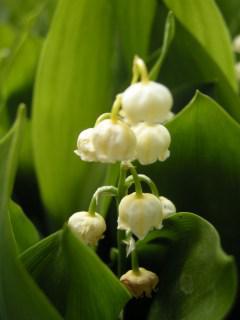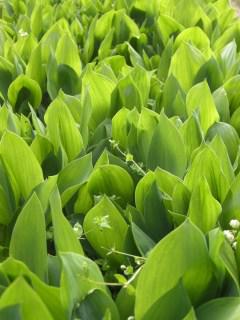
Convallaria majalis Flower (17/05/2012, Prague, Czech Republic)
Position: Dappled shade to shade
Flowering period: Late spring
Soil: Moist, well drained
Eventual Height: 30cm
Eventual Spread: 10cm
Hardiness: 3a – 9a
Family: Asparagaceae
Subfamily: Nolinoideae
Convallaria majalis is a spreading herbaceous perennial. Its dark green leaves are lanceolate with entire margins, are up to 25cm long, emerge from upright dormant stems in spring and appear in one or twos . Its fragrant white flowers are tepals and bell shaped, up to 1cm across and appear in racemes of up to 15 flowers on the apex of an erect stem. Its fruit is a red berry which is up to 7mm across. Its roots are rhizomes and these aid the spread of this pant.
Convallaria majalis, commonly known as Lilly of the Valley, Our Lady’s Tears, Mary’s Tears, May Lilly or May Bells, is native throughout the cool temperate regions of Asia and Europe (including the UK). This plant may be invasive in some locations. All parts of this plant are poisonous.

Convallaria majalis (17/05/2012, Prague, Czech Republic)
The etymological root of the binomial name Convallaria is derived from the Latin convallis meaning ‘valley’, in reference to its common name. Majalis is derived from the Latin maialis meaning ‘of May’
The landscape architect may find Convallaria majalis useful as an effective low growing ground cover, particularly in shady locations. Care should be taken when locating this plant as it is poisonous.
Ecologically, C. majalis is very attractive to bees and pollinating insects.
The Royal Horticultural Society has given C. majalis their prestigious Award of Garden Merit in 1993.
C. majalis prefers moist, fertile, humus rich, well-drained soils. It tolerates most pH of soil.
Convallaria majalis requires little maintenance. Large clumps may be divided in autumn.

